Archive for January, 2012

Differences in Earnings between different Occupational Groups
Jan 26th
Here are some resources to help you with this aspect of the IGCSE Economics syllabus:

Source: Capital Gains Tax Rate & Income Inequality Chart
Via http://www.fastcodesign.com
Mastering Light in #Photography 1 – Adjust Your ISO Settings
Jan 24th
If photography is ‘writing with light’, we need to learn how to control the light entering our cameras if we are to take successful shots.
There are three ways of controlling light – adjusting aperture size, shutter speed or ISO settings.
ISO settings refer to the sensitivity of the camera’s sensor to light. The sensor is at the back of the camera, inside the body, where the image is captured electronically. In more traditional cameras, this is where the film would be. In film cameras, we need(ed) to choose the speed (or sensitivity) of film for different light conditions.
Low ISO film and low ISO settings on a digital camera need lots of light to capture the image, but give the sharpest image and richest colours as a result. Think bright sunny days giving vivid and clear images.
High ISO settings work with low light conditions, which is the number one reason to use them, but the quality of the picture can be noticeably degraded compared to those taken with a low ISO number in sufficient light. High ISO images tend to have noticeable ‘noise’ or a graininess which may not be desirable, but still may be preferable to switching on the flash. That said, some photographers actually make deliberate use of the graininess, which can look very striking for example on black and white portraits.
Some modern and more expensive SLR cameras give impressive shots even at very high ISO settings with less noise visible.
The key thing is, you should experiment with your ISO settings to adjust the quality of the image but also to allow you to take pictures in dim light to good effect.
It is the one of the three settings which is often forgotten about, but setting the right ISO allows you more flexibility with aperture and shutter which is why I’d start experimenting with this first.
Resources:
ISO Settings in Digital Photography by Digital Photography School.
Use a High ISO to Create Grainy Shots by Digital Photography School.
ISO by MichaelTheMentor
ISO Basics by ulufilms:
Camera Tutorials – ISO by QQQcon
Introduction to Development
Jan 22nd
This post offers some resources to help learn about the key syllabus pints under section 3.2 of the 2005 IB Economics syllabus.
Definitions of economic growth and economic development
and
Differences in the definitions of the two concepts
This video excellent by Flame India includes points on limitations of using GDP to compare welfare (below) and alternative measures (HDI). Take note of the definitions by Michael Todaro and also the contributions of Amrtya Sen and Mahbub ul Haq. Note how Economic Growth contributes towards Progress in Human Development.
Gross Domestic Product (GDP) versus Gross National Product (GNP) as measure of growth
To recap the meaning of GDP, you might use this opengecko post:
To see some examples of actual GDP figures, you could use this post:
Comparing GDP and Other Indicators Across Countries
PAJ Holden gives a detailed explanation of the difference which lasts 8 minutes:
This video summarises the differences much more quickly:
Limitations of using GDP as a measure to compare welfare between countries
Notice – Joseph Stiglitz also points out the difference between GDP and GNP (above) as well.
Allowance for differences in purchasing power when comparing welfare between countries
Alternative measurements of development
Composite Indices – HDI and beyond by hdr.undp.org

See the original (via EU Infrastructure) here.
Problems of measuring development
For this section, you may conduct your own online research and/or consult your text book.
Changes in Earnings Over Time For An Individual
Jan 21st
Tasks:
1) You should also create a hand-drawn chart to show how , in theory, a person’s earnings might change over the course of their lifetime. This should be saved as a digital version (you might draw it using online tool such as dabbleboard, or you might draw it by hand on a tablet, or you might draw it on paper and scan / photograph it).
2) Your task is to write the script for a audio report describing and explaining (giving likely reasons for) how earnings are likely to change over the course of a person’s lifetime, and you should refer to your image. You should aim for a report that lasts approximately 2 minutes maximum.

Image: Some rights reserved by dslrninja
Resources:
These resources should help you to visualise things. Some are quite complex – it is up to you to simplify the information while keeping some of their main information ‘in tact’.
Average Lifetime Earnings Trajectories by Education – by Political Calculations. Click on the image in the blog article.
Peak Earnings by Mother Jones
US Average Income per Income Earner by Age Group for 1995 and 2005 – via Political Calculations
Distribution of US Individual Income by Age, 1995 via Political Calculations
Education and raises by Marginal Revolution
This following ‘infographic’ actually tackles how ‘discretionary income’ changes – you should read what this actually means as it is different from earnings, but still worth exploring.
How Does Discretionary Income Change Over A Lifetime?
Money – Its Characteristics and Functions
Jan 15th
Your task is to answer these questions:
- What is barter?
- Where does barter still occur?
- What are three problems with barter?
- What are the four main functions of money?
- What are the necessary characteristics of money? You should find at least five, but there are more. Give examples to explain each characteristic.
Here is mjmfoodie on the topic but you only really need to watch from 48 seconds in until 3 minutes and six seconds in.
This video was created over 60 years ago, but is still a good introduction to the topic:
This is a well put together animation to show the problems with a barter system:
This video is also useful, but be careful, it mixes the characteristics up with the functions of money:
Think you’re getting the hang of it? Check this light-hearted approach to the topic:
Enquiry–Market Failure and Possible Solutions in Real Life Issues
Jan 8th
This activity is designed to address the following syllabus point from the Cambridge IGCSE Syllabus (0455) for Economics:
define private and social costs1 and benefits and discuss conflicts of interest in relation to these costs
and benefits in the short term and long term through studies of the following issues:
• conserving resources versus using resources;
• public expenditure versus private expenditure.1 Social costs are equal to the sum of private costs and external costs.
It is suggested that these enquiries are conducted in groups.
Research and prepare a presentation or written summary on one of the following issues for the your country which you are studying in. Suggestions on what to include on your presentation / summary are at the bottom of this post.
Type A – Public versus Private Provision of Key ‘Services’
Transport – should there be more public or private transport in your chosen country?

Image: Some rights reserved by Jeff Attaway
The Provision of Health Care – should there be more public or private provision?
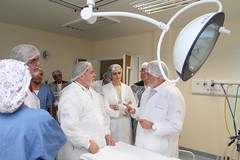
Image: Some rights reserved by Fotos Gov/Ba
The Provision of Education – should there be more public or private provision?

Image: Some rights reserved by Artshooter
Type B – Use of versus Conservation of Key ‘Resources’
Using Wood from Forests as a Raw Material
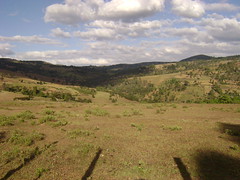
Image: Some rights reserved by afromusing
Using Rivers to Generate Hydro Electricity
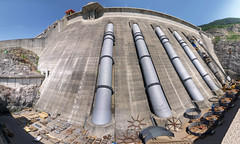
Image: Some rights reserved by Kam’s World
The Use of Fossil Fuel Power Stations
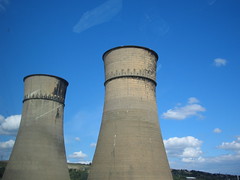
Image: Some rights reserved by Tim Ebbs
The Use of ‘Beauty Spots’ (such as beaches) for Tourism
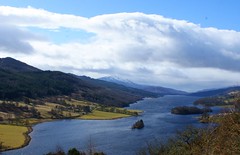
Image: Some rights reserved by sarniebill1
Suggestions of what you could include in your presentation / summary:
1) What are the private costs and benefits involved?
2) What are the external costs and benefits involved?
3) If Type A Issue – Government versus Private. How has the government been involved? How has the private sector been involved? Should this change and, if so, why?
If Type B Issue – Conservation versus Usage. What are the resources used for, how much are they used, are they conserved? Should they be used more or conserved more?
4) What conflicts of interests are there in this issue? What different groups are involved and how are they affected differently? Why might they have different views on using these resources / providing these services?
5) Discuss how this issue might differ between the short term and the long term. For example, what are the short term effects of using these resources / providing this service? What are the long term effects? Are there short term solutions and are there long term solutions?
Bonus points awarded for:
- Use of and accurate definitions of relevant key words/phrases.
- Real life evidence – statistics, places, dates, etc.
- Diagrams with explanations.
Suggested format:
Either
a) A slideshow that you can explain briefly to the rest of your class.
b) An email to someone, such as your teacher, but imagining that they are an influential person in the government and that you are writing to advise them on this issue as an Economic advisor.








